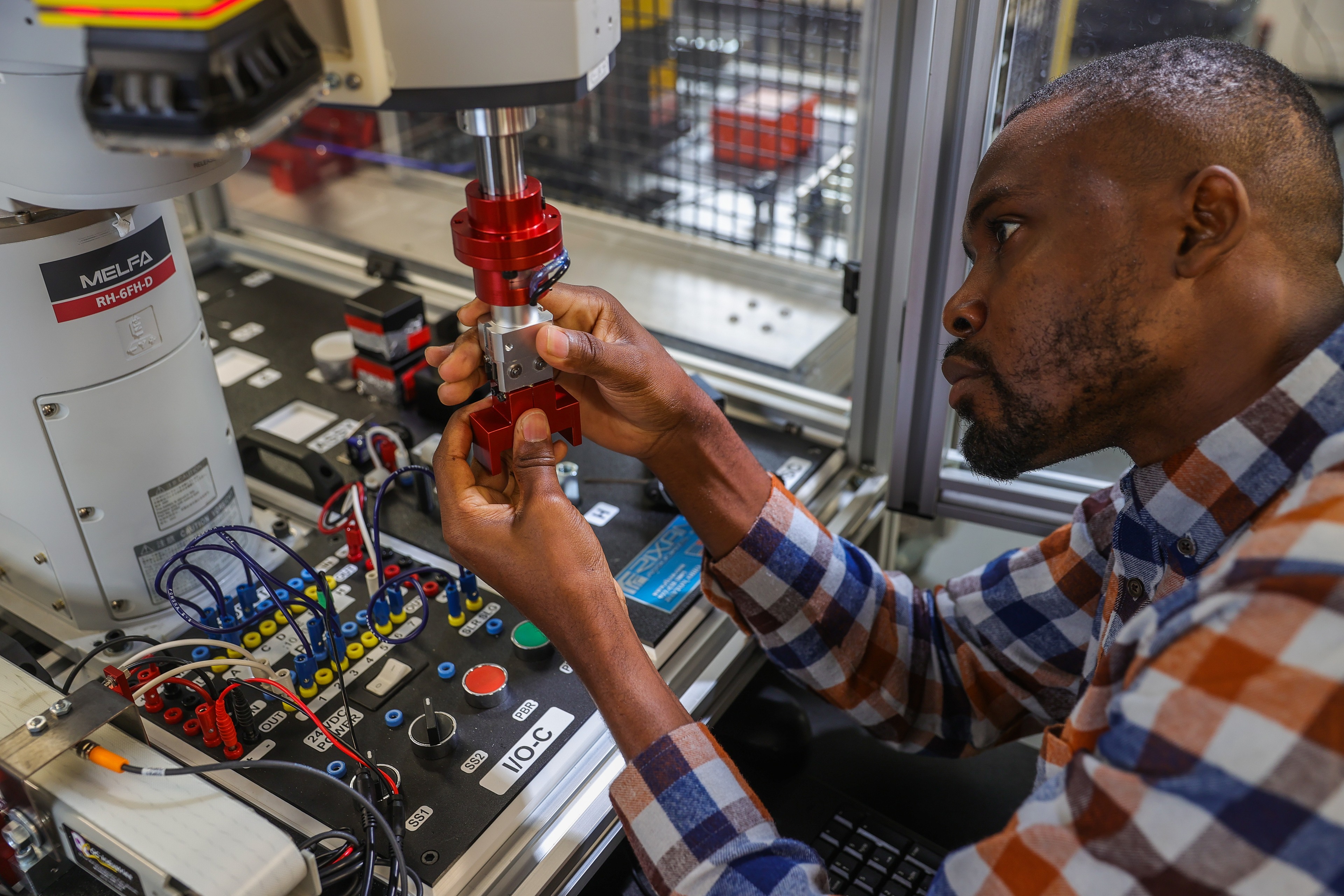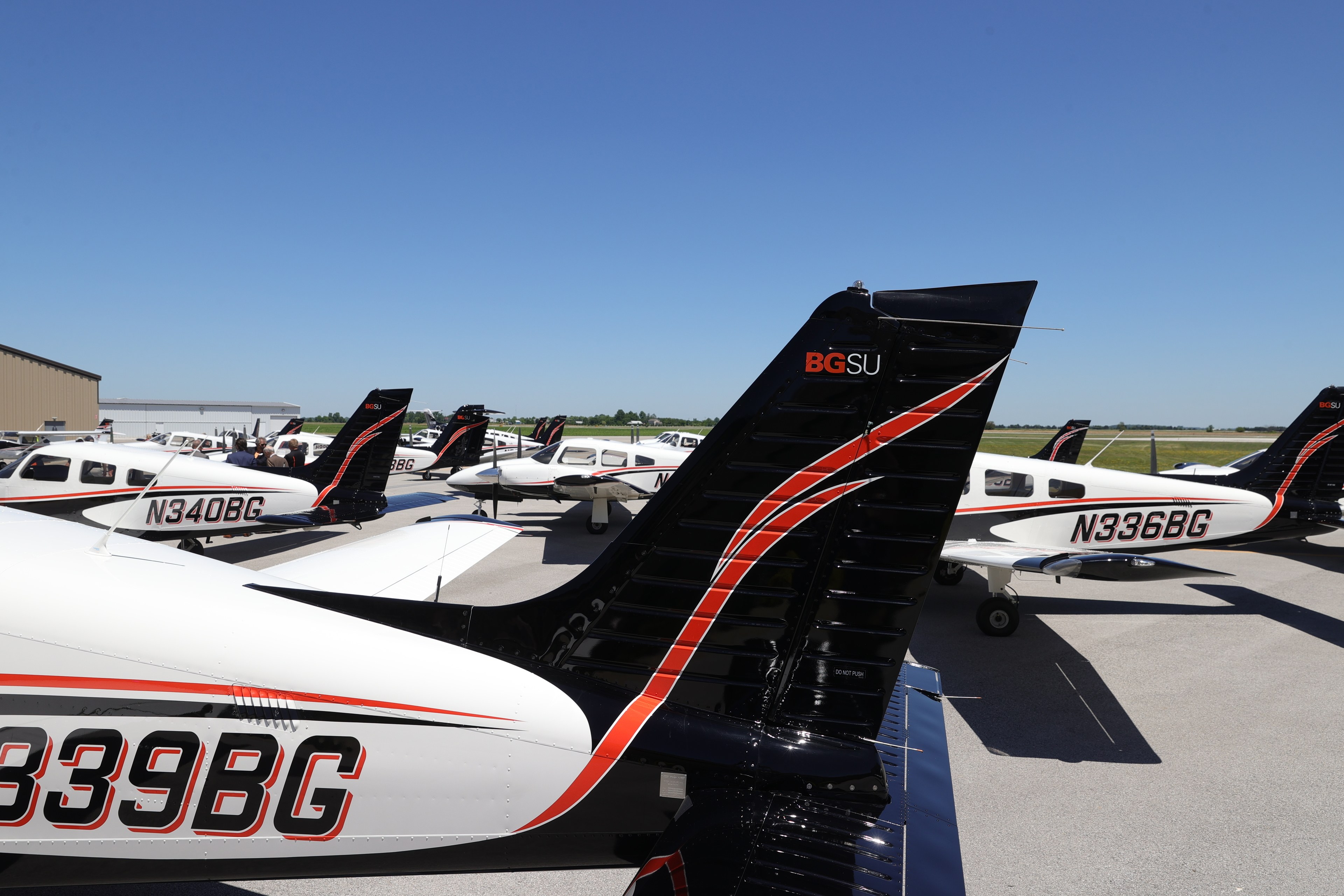
BGSU announces new School of Engineering, School of Aviation
Changes to University’s College of Technology, Architecture and Applied Engineering are in direct response to workforce needs and have the support of the majority of faculty and staff
The Bowling Green State University Board of Trustees on Friday approved a landmark change to the University’s College of Technology, Architecture and Applied Engineering (CTAAE) that will both enhance education opportunities for current and future BGSU students and respond directly to workforce needs in Ohio and beyond.
The board passed a reconfiguration of the college that will create the School of Engineering and the School of Aviation. The reconfigured CTAAE will be composed of the new School of Engineering, School of Aviation and the existing School of the Built Environment.
The creation of a School of Engineering builds upon what BGSU already does well: its engineering technology programs hold accreditation from ABET (Accreditation Board for Engineering and Technology), and the University’s excellence in math and science allows BGSU to become a major player in addressing a significant workforce need for qualified engineers, particularly in Ohio.
The changes will also allow the nationally recognized BGSU Aviation program to continue its rapid growth. Recently ranked No. 4 in the nation by FLYING Magazine, the BGSU Aviation program will be housed in the new School of Aviation, allowing the program to better serve students and meet industry demand.
"With the creation of the new School of Engineering and the School of Aviation, BGSU is positioned to meet the critical workforce needs of Ohio and beyond," said BGSU President Rodney K. Rogers. "As a public university for the public good, we are steadfast in our commitment to creating and enhancing relevant academic programs that provide opportunities for our students and for the public."
Meeting Workforce Demand
The demand for professionals with Science, Technology, Engineering and Math (STEM) educational backgrounds will continue to grow in the future. According to the U.S. Bureau of Labor Statistics, most engineering careers are expected to grow at rates that exceed 10% between 2020 and 2030, and STEM job growth is expected to nearly triple non-STEM job growth during the same time frame.
Within the region, there is also a significant need for professionals in logistics, health care, advanced manufacturing and other STEM-related fields to sustain growth.
Enhancing and converting existing technology programs into engineering programs will enhance enrollment, and address workforce needs by supplying well-prepared graduates in areas of significant need.
Earlier this month, U.S. News & World Report ranked the University’s engineering programs among the best in the nation in its 2022-23 Best College rankings. The reconfiguration of CTAAE will allow the University the opportunity to explore additional engineering programs in the future, pivot quickly in response to industry needs, provide advancement opportunities for curriculum development with subject matter experts, expand opportunities for high-impact research and meet projected growth before it happens.
Three existing technology programs will move into engineering programs that will be housed within the School of Engineering, including mechatronics engineering technology, which will be converted to robotics engineering; mechanical and manufacturing engineering technology, which will be converted to mechanical and manufacturing engineering; and electronics and computer engineering technology, will be converted to electronics and computer engineering.
All three programs will award a Bachelor of Science in Engineering after the conversion, which is currently underway.
Taking Flight
BGSU, which is now home to the largest aviation program in the state of Ohio, is committed to continued investment in aviation. Thanks to a public-private partnership with North Star Aviation, the University debuted a $5 million expansion of the Bowling Green Flight Center in June, and now will make the School of Aviation a reality within CTAAE.
BGSU Aviation has experienced booming growth – by the 2021-22 academic year, the number of students and staff tripled from seven years earlier – and current projections indicate aviation will only continue to grow.
According to the U.S. Bureau of Labor Statistics, demand for pilots, both commercial and airline, is expected to rise 13% by 2030, while aviation management is expected to grow 6%. Even before expected future growth, the demand for pilots is not being met now, either in Ohio or nationwide.
Initially, the School of Aviation will offer the University’s existing Bachelor of Science in Aviation degree, with specializations in Flight Technology and Operations and Aviation Management and Operations. Program updates are currently underway that will allow the University to offer two Bachelor of Science degrees in Flight Technology Operations and Aviation Management.

With the many opportunities provided for students at BGSU – one of the few universities with an airport located on its campus land – the University is uniquely positioned to train the aviators of tomorrow.
"To best prepare our graduates for an ever-changing workforce, BGSU puts a premium on the success of our students," said Joe B. Whitehead, provost and senior vice president for academic and student affairs. "The time is right for BGSU Aviation to become its own school within CTAAE, and the changes will only enhance the experience for our students and give them additional opportunity to succeed when they graduate."
Impact to the college
With the two new schools, all of the college's programs will now be housed in one of three schools within the CTAAE, providing collaborative and industry-focused curriculum. The college has an already-established School of the Built Environment for its construction management and architecture programs.
Earlier this year, the majority of faculty and staff overwhelmingly passed a resolution in support of the reconfiguration.
“These changes will continue to open doors for our students, while at the same time aiding our region by meeting its workforce needs,” said Dr. Jennie Gallimore, professor and dean of CTAAE. “Creating both schools will increase the visibility of BGSU, better address the needs of both students and the workforce and support the overall mission of the University by doing public good from the ground up.”
All academic programs within the Department of Engineering Technologies (DET) and Department of Visual Communication Technology & Education (VCTE) will be housed in the School of Engineering except for Aviation, which will be housed in the School of Aviation.
Degree pathways for current students within the college will be uninterrupted by the reconfiguration.
Related Stories
Media Contact | Michael Bratton | mbratto@bgsu.edu | 419-372-6349
Updated: 08/31/2023 01:06PM




